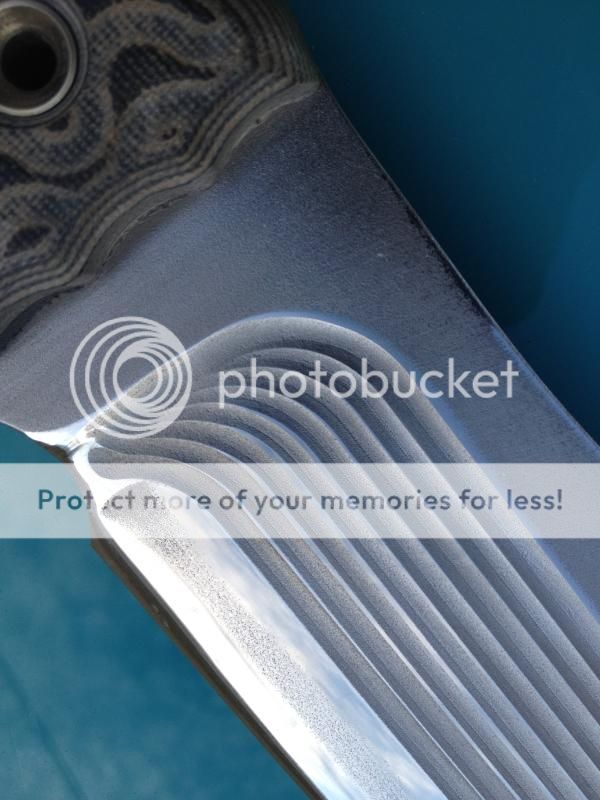Hey all,
my first post here, but I've used the forum for reference a number of times previously.
I own the following knife. I'm looking for options to restore it to something special again. Mainly sorting the discoloration. How would sand / shot blasting work? For the LIFE of me, I simply cannot seem to hand finish the thing myself, and the dark coloring in the recesses simply won't budge.
As for the edge, it's seen a lot of action including home tree pruning, felling tree's and also battening through rusty bolts on my parents Anderson Air-Raid shelter which we excavated from their garden last year (because, well, the Busse can!). I'll handle the edge myself which is a convex I put on there a few years back. I lent it to my father a while ago and he accidentally left it in the garden so that explains some of the weathering I guess.
Thoughts? I'm guessing that shot blasting won't work on the sides of the tang as it might hurt the micarta? If there is a hand restoration process I should consider, I'm all ears!

Many thanks up front.
-UWon-
my first post here, but I've used the forum for reference a number of times previously.
I own the following knife. I'm looking for options to restore it to something special again. Mainly sorting the discoloration. How would sand / shot blasting work? For the LIFE of me, I simply cannot seem to hand finish the thing myself, and the dark coloring in the recesses simply won't budge.
As for the edge, it's seen a lot of action including home tree pruning, felling tree's and also battening through rusty bolts on my parents Anderson Air-Raid shelter which we excavated from their garden last year (because, well, the Busse can!). I'll handle the edge myself which is a convex I put on there a few years back. I lent it to my father a while ago and he accidentally left it in the garden so that explains some of the weathering I guess.
Thoughts? I'm guessing that shot blasting won't work on the sides of the tang as it might hurt the micarta? If there is a hand restoration process I should consider, I'm all ears!

Many thanks up front.
-UWon-






